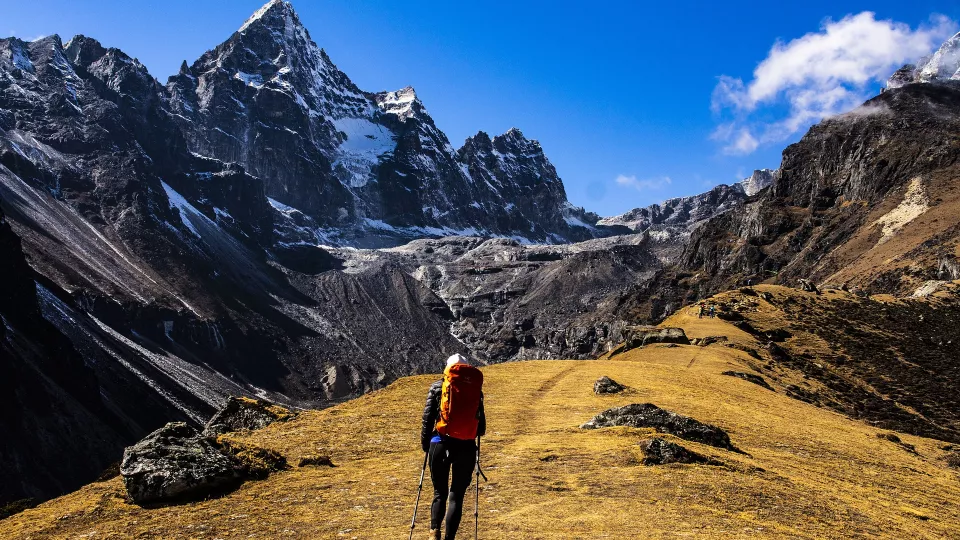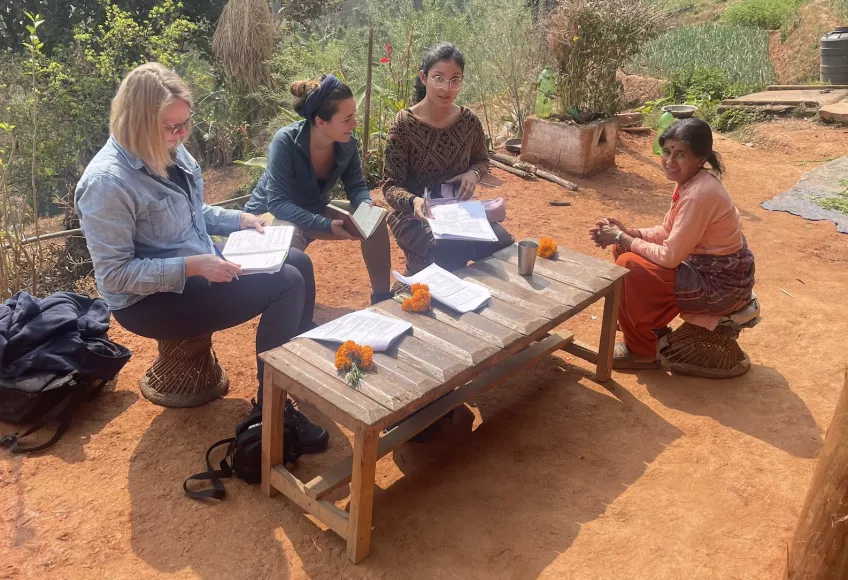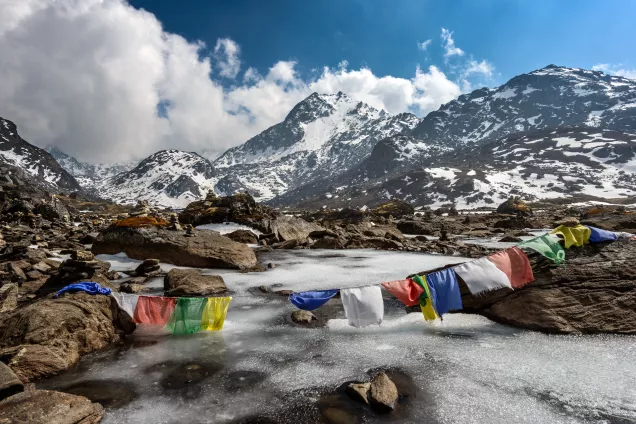Mine Islar, senior lecturer at Lund University Centre for Sustainabilty Studies, LUCSUS, is studying glacial retreat in the Himalayas, and has just started a four-year research project investigating the social impacts of climate change in the region. In her previous research she has undertaken several months of fieldwork in Nepal.
The Himalaya mountain range is highest part of the world, and the source of the world's great rivers: The Yangtze, the Ganges, the Indus and the Mekong. Over a billion people depend directly on the Himalayas for their survival, over 500 million people in South Asia, and another 450 million in China.
– This is one of the world’s most sensitive hotspot to global climate change. Yet, Western media tend to focus only on Mount Everest - underpinned by a fascination with conquering this wild peak - even when they write about climate change! But glacial melt will impact huge numbers of people, livelihoods and communities, who are all reliant on the health of this fragile mountain landscape, says Mine Islar.
Effects of glacial melt will have huge consequences
The effects of increased glacial melt in the region include increased risk of landslides, glacial lake outbursts, and avalanches. There have already been instances of glacial lake bursts and avalanches in the region. One incident happened in 2021, where hundreds of people died due to a large rock and ice avalanche consisting of material dislodged from a glacier peak in Uttarakhand in India.
For communities living in the region, these recurring disasters will have profound consequences, according to Mine Islar. Tourism, livelihoods, infrastructure, energy and water supply are under threat as climate change accelerates glacial retreat. One example is the hydropower plants which depend on stable and predictable water flow. As water flows change, communities might not be able to rely on hydropower, and in that case become likely to go back to traditional energy sources, for example wood burning. This development is negative for Nepal's transition to renewable energy. Another is the trekking routes, which are becoming more unreliable as the ground is destabilized by glacial changes. Spiritual values are also affected when people have to relocate, as some Himalayan communities attribute spiritual meaning to glaciers.
Map lived experiences of climate change and impacts on local communities
– In our research with collaborators in the region, we are mapping social, economic and ecological impacts in relation to glacial change. Our aim is to provide more context to glaciology studies that tend to focus on the geographical scale of the loss. We are collecting the stories of communities who live beside the glaciers to give a holistic picture of their experience of climate change.
Combating and responding to the effect of climate change will require transboundary initiatives – that are difficult to put in place since the borders of India, Pakistan, Afghanistan, China, Bhutan and Nepal are quite securitized, according to Mine Islar. One adaptation strategy can be relocation – since it is not easy to stop a glacial lake burst, or stabilize the lake. Yet, relocation is a difficult option, since many people do not want to leave, or have nowhere to go.
– The high altitude means that climate change seems to happen faster. Policy makers need to collaborate beyond borders and national policies. If a glacier lake in Tibet burst, and this leads to flows, the downstream Nepalese communities will be directly affected.
Unclear how the route to Mont Everest will look like in 70 years
So, does she think that local communities and tourists will be able to climb Mount Everest in another 70 years?
– It can be possible, but not the same way, not through the ice. But in the present and close future, due to glacier melt, the route can become unstable and alternative routes are arranged.
What could take its place instead are other forms of tourism is ecotourism, similar to initiatives now underway in the Alps, where lack of snow is becoming an increasing problem, notes Mine Islar. These types of tourism, for example trekking lower down in the mountains, or visiting local villages, could replace the important economic income that the Mount Everest-climbing industry represents.
– Climate change is here and we have to act now. By studying how communities are dealing with change connected to tourism, energy usage, and culture we can contribute to, and recognize, local adaptation solutions, says Mine Islar.




